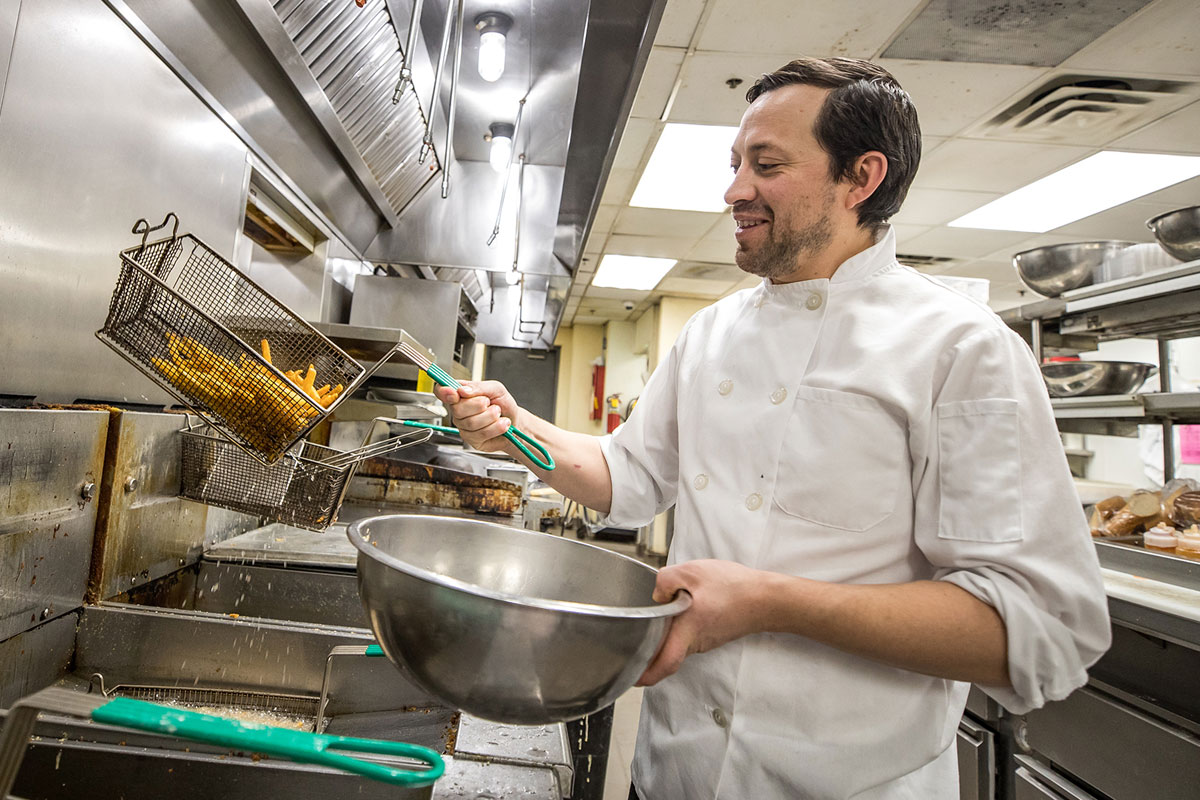Sponsored by Restaurant Technologies Inc.
Quick-service restaurant operators are struggling with a plethora of challenges in today’s marketplace—increasing minimum wage, new government regulations, and fast-evolving consumer demands, to name a few.
And, of course, there’s the labor problem. With the national unemployment rate hovering around 4 percent, quality workers are hard to come by, and the competition for a strong workforce is tougher than ever. That makes having an attractive and safe workplace incredibly important to operators who are recruiting new talent or hoping to retain their existing talent.
David Eha, director of national accounts at Restaurant Technologies, says today’s operators want new ways to differentiate their work environments from those of competitors—and safety and cleanliness are easy ways to rise above the pack.
“Companies that demonstrate a commitment to creating a safe work environment are recognized by their workers and tend to be rewarded with more loyal employees,” he says. “Put simply, there’s a direct correlation between working conditions and employee job satisfaction.”
Safety issues in quick-service kitchens can include slip-and-falls from wet or greasy floors, cuts and lacerations, or sprains and strains from the demanding work. Another major issue is burns, whether from hot equipment or from handling oil.
With oil, it used to be common practice for employees to manually transfer used product to a cart, shuttle it outside, and dump it into a rendering tank, Eha says. Not only could that process take up to a half an hour, but it could also lead to painful injuries.
“That’s something that really gets employees’ attention: When they see one of their coworkers get burned from oil,” Eha says. “That’s something that other employees notice. And nobody wants to do that job. For us, that really is low-hanging fruit—an opportunity to take that worst job in the kitchen that nobody wants to do … and you completely eliminate it.”
An oil management system that eliminates that task immediately turns an operation into a more attractive place to work for discerning employees. Dangerous work environments can lead to higher turnover, which is already very high in the limited-service industry; Eha says the turnover rate for regular line employees is estimated at about 110 percent.
And turnover isn’t just a headache for operators, but it’s also expensive. Eha points to data from Cornell’s Center for Hospitality Research that says turnover can be as high as $5,800 per restaurant employee, as operators have to invest in recruiting, selecting, and training new workers, while also dealing with loss productivity.
Further, dangerous work environments can be costly due to workers’ compensation claims. A quick serve would need to sell 3,000 meals to cover the cost of an average workers’ comp claim, Eha says. The typical restaurant, he adds, has four claims per year. “It’s worth noting that employee turnover itself can be a major safety risk, since new hires may not be familiar with the new work environment and safety precautions,” he says.
Some 60 percent of workers’ comp incidents can be attributed to the manual handling of cooking oil, he adds.
In today’s environment, restaurant operators have fewer excuses for not having safe working environments—and increasingly, employees have more opportunities for abandoning jobs that are unsafe.
“In years past, they may have been more apt to just deal with it and accept it as part of the job,” Eha says. “In this environment, where they could easily go down the street and find a job they perceive to be more rewarding, chances are they’ll move on.”













